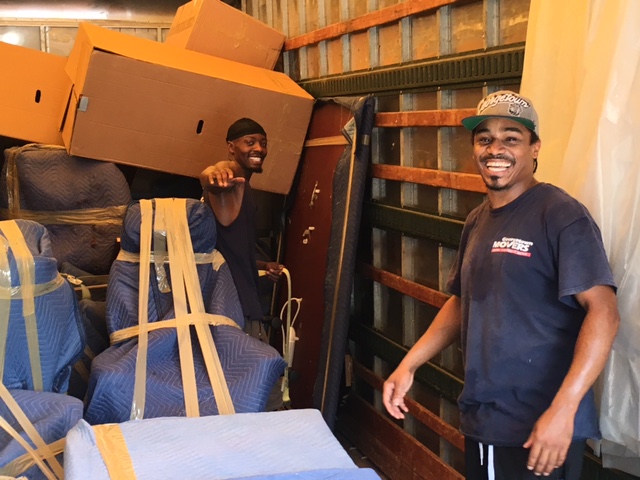Moving to a new home is a huge change that can affect your life in many ways. It can also be an opportunity to experience a different lifestyle.
Movers can help you with all aspects of your move, including packing and transportation. They can also disassemble and reassemble furniture and offer storage services. Make sure to get quotes from several movers and check their credentials.
Professionalism is an essential aspect of business, especially in moving services. It means acting ethically and embracing standards of quality and excellence. Those who exhibit professionalism are known to be competent in their work and respect others. This is why it’s important to choose movers who are well-trained and knowledgeable about their craft.
Ask about their certifications and licenses. For instance, they should have a Department of Transportation number for interstate moves and state-specific licensing for local moves. You can also check their online profile for authentic testimonials. Moreover, find out about their payment policy and mode of operation. For example, some companies may accept only cash, while others prefer credit cards. Make sure you’re clear about the mode of payment to avoid any confusion later on.
It’s also a good idea to assess a mover’s professionalism by their level of interaction with customers. If a company ignores queries or doesn’t respond to complaints, this can be a sign of incompetence and poor customer service. Besides, you can also determine their level of professionalism by their adherence to industry standards.
Safety
There are many safety hazards when it comes to moving, and a lack of knowledge or proper preparation can lead to serious injuries. Every year hundreds of workers in the industry suffer from back injuries, carpal tunnel syndrome, and other serious problems. Moving companies take several precautions to make the move as safe as possible for their employees. These measures include providing proper training, conducting routine inspections, and providing appropriate equipment. They also follow specific safety guidelines for handling and transporting heavy items.
One of the most common risks during a move is falling, and this is often caused by slippery surfaces or stairs. To prevent this, movers often lay down runner mats along indoor hallways and stairs to mitigate slips and falls. In addition, movers always wear closed shoes with good traction and support. They also avoid wearing flip-flops or heels, which could easily get caught underfoot or slip off.
Another common risk is getting cut while handling sharp objects. Moving companies avoid bringing sharp knives or other dangerous items into the home, and they carefully wrap anything that could pierce someone’s skin during the move. They also cover tables and desks with protective padding to keep them from scratching or cutting anyone who moves them.
Moving can be a stressful time, and this is especially true when children or pets are present. It’s best to have them stay with a trusted friend or family member while the move takes place. This will not only keep them out of the way but will also prevent them from getting lost or injured in the shuffle.
The last important element of moving safety is maintaining a clear path. This means clearing all indoor hallways of floor litter and boxes that could impede movement, as well as clearing each room of clutter and items. Additionally, movers should walk along indoor hallways and doorjambs as they are preparing to exit the house, watching for protruding nails or other hazards. Outdoors, they should remove any ground debris or trim back overgrown shrubs that could snag passersby.
Efficiency
The ability to pack and transport items with efficiency is one of the biggest factors that separates movers from self-movers. Professional movers have the equipment and experience to pack and move items quickly, and they know how to best load a truck for the most efficient travel. Additionally, they have access to specialized vehicles that can accommodate large or bulky items. This is especially helpful for moving long distances.
If you’re hiring movers, make sure they are local and familiar with your area. This will ensure that they can offer a high level of service and navigate any traffic or congestion on moving day. Additionally, movers who are local will be aware of the peak moving times in your area, which may help you avoid higher pricing and traffic.
In addition to offering a quality service, movers must also strive for efficiency. This is important for reducing costs and increasing the profitability of their services. This can be accomplished by implementing various efficiency measures, including optimizing the number of workers and utilizing technology to reduce driving and fuel consumption.
Efficiency is particularly important for movers that offer residential relocation services. The logistics of a home are different from the logistics of an office building or warehouse, and movers must be able to adapt to these differences. Moreover, they must be able to meet the client’s expectations for a quick and safe relocation.
Whether you’re moving across town or across the country, your move should be as seamless as possible. In addition to saving money, you’ll save time and energy by avoiding stress and delays. The best way to do this is by planning ahead and preparing for your move. Getting your family or friends to help you can be very helpful, but it’s important to keep in mind that this may add to the cost of the move.
In addition to the usual concerns of a home move, such as safety and efficiency, you should also consider your ecological footprint. Moving has a substantial environmental impact, and the transportation of belongings generates carbon emissions. This can be minimized by using environmentally friendly boxes and packing materials.
Reputation
A mover’s reputation is a complicated thing. It moves from individual cognition to social propagation and back to individual cognition, and things like customer reviews and FMCSA snapshots can shape it.
When choosing a mover, you should check their website for client reviews and testimonials. You should also look at the moving company’s history to ensure they fit you well.



